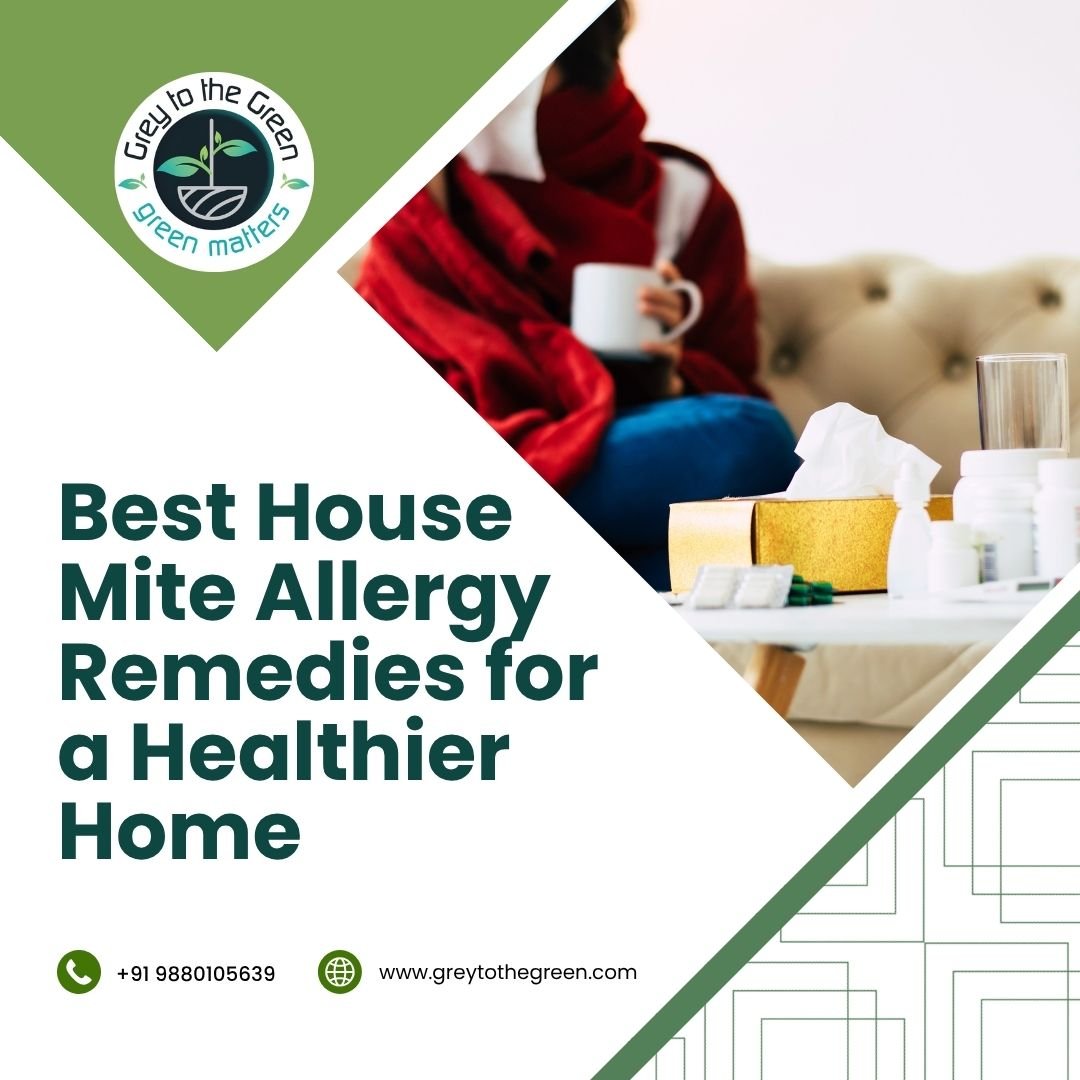Understanding the Danger of House Mite Allergy
Here are three key statistics that show how widespread the issue is:
- 1 in 5 people globally are allergic to dust mites
- Dust mites are responsible for up to 80% of allergic asthma cases.
- More than 85% of homes contain detectable levels of dust mite allergens, especially in bedding and upholstered furnitures.
Reasons for House Mite Issues in Homes
Here are more reasons why household dust allergy and house dust mite allergy are increasing:
1. Use of Foam Mattresses and Pillows
2. Lack of Sunlight in Indoor Spaces
3. Poor Indoor Air Quality
4. Thick Curtains and Heavy Upholstery
5. Wall-to-Wall Carpeting
5. Wall-to-Wall Carpeting
6. Crowded Living Spaces
7. Low Use of Eco Friendly Home Products
8. Neglect of Soft Toys and Pet Bedding
8 Tips to Protect Your House from House Mites
Reducing dust mite exposure isn’t just about deep cleaning. It’s about making strategic lifestyle changes to minimize allergen buildup. Here are 8 tips to help you combat house mite allergy effectively:
1. Vacuum Regularly with a HEPA Filter
2. Wash Bedding in Hot Water
3. Use Dust-Mite-Proof Covers
4. Reduce Indoor Humidity
5. Avoid Wall-to-Wall Carpeting
6. Declutter Your Home
7. Freeze Soft Toys
8. Use a Natural Mite-Repellent Spray Like Checkmite
How Can You Prevent House Mite Allergy?
Preventing house mite allergy is easier when you build a consistent routine. Here’s a step-by-step prevention plan:
Common Dust Mite Allergy Symptoms:
- Daily
Make your bed and keep windows open (if weather permits) to allow air circulation.
- Weekly:
Clean floors and dust surfaces using microfiber cloths that trap allergens.
- Monthly:
AWash curtains and clean upholstery.
- Quarterly:
Deep-clean mattresses and apply anti-mite sprays like Checkmite to break the breeding cycle
Also, incorporate eco friendly home products in your cleaning routine to reduce exposure to harsh chemicals that can trigger secondary reactions.
How Checkmite Can Protect Your House from House Mites
Grey to the Green’s Checkmite is more than just a spray—it’s a holistic solution for managing house mite allergy in a safe, sustainable, and effective way. Crafted from neem extract, a plant known for its natural insecticidal and antimicrobial abilities, Checkmite is designed to offer deep protection from mites that cause bed mite allergy, house dust allergy, and related health concerns.
Here are additional ways Checkmite can protect your home:
1. Deep Fabric Penetration
Checkmite is specially formulated to penetrate deep into soft furnishings—mattresses, cushions, curtains, and carpets—where mites breed and hide. This ensures better coverage than surface-level cleaners, helping control house dust mite allergy at its source.
2. Neutralizes Odor-Causing Bacteria
Many mites thrive in warm, damp environments that also encourage bacterial growth. Checkmite contains neem-based antimicrobial properties that not only kill mites but also neutralize bacteria—reducing both allergens and unpleasant odors.
3. Supports Skin Health
People suffering from house dust mite skin allergy often develop rashes or eczema due to prolonged allergen exposure. Checkmite reduces skin irritants by lowering dust mite presence, providing relief for both adults and children with sensitive skin.
4. Non-Irritating for Pets and Babies
Unlike traditional sprays that contain harsh chemicals, Checkmite is safe for homes with babies, elderly individuals, and pets. It helps manage household dust allergy triggers without adding toxins to your indoor air—an ideal feature for health-conscious families.
5. Eco-Conscious Allergen Control
Checkmite reflects the growing demand for eco friendly home products by offering an herbal alternative to synthetic sprays. It’s biodegradable, chemical-free, and made without artificial fragrances, making it a responsible choice for sustainable living.
6. Compliments Other Allergy-Reduction Methods
Use Checkmite alongside HEPA-filter vacuums, hot water washes, and dehumidifiers to build a multi-layered defense system against house mite allergy. It enhances the overall effectiveness of your allergy prevention routine.
7. Long-Lasting Effect
Unlike temporary solutions, Checkmite provides ongoing protection. Regular weekly applications help maintain low allergen levels and prevent mites from making a comeback, giving continuous support for those battling bed mite allergy and household dust allergy.
8. Quick-Dry & Residue-Free
The formula dries fast and leaves no sticky residue on surfaces, making it easy to use before bedtime or on upholstered furniture. It’s designed for real homes and busy lives, without disrupting daily routines.
With its natural formula, deep-action cleaning, and allergen-neutralizing abilities, Checkmite is a game-changer for those suffering from house mite allergy. It not only protects your health but also contributes to a cleaner, greener home. Whether you’re struggling with house dust mite skin allergy, managing house dust allergy in kids, or simply want to switch to eco friendly home products, Checkmite offers trusted, botanical-powered relief.
Top Ingredients That Help with House Mite Issues
Not all anti-mite products are created equal. Checkmite stands out because of its natural, plant-based ingredients. Here’s what makes it effective:
1. Neem Extract
The hero ingredient in Checkmite, neem contains compounds like azadirachtin that kill mites and stop them from reproducing. It also has anti-inflammatory and antimicrobial properties—making it a great choice for house dust mite skin allergy sufferers.
2. Ethanol (Plant-Based Alcohol)
Used as a base, this component helps the neem penetrate fabric surfaces and ensures quick drying.
3. Distilled Water
It acts as a safe carrier for the active ingredients, ensuring even distribution without leaving harmful residues.
These ingredients combine to offer a product that’s powerful against house mite allergy, yet safe and environmentally responsible.
Conclusion: Build a Mite-Free, Healthier Home
Living with house mite allergy doesn’t have to mean daily discomfort. With the right mix of preventive strategies and trusted solutions like Checkmite, you can reduce allergens, improve air quality, and enjoy a healthier home environment.
Whether you’re battling bed mite allergy, house dust allergy, or household dust allergy, switching to natural and eco friendly home products is the first step toward lasting relief.
So, why wait? Take control of your indoor air quality today. Add Checkmite to your allergy-defense routine and protect what matters most—your family’s health.
Frequently Asked Questions (FAQs)
1. What is house mite allergy, and how is it caused?
House mite allergy is a reaction to proteins found in dust mite waste and body parts. These microscopic mites thrive in household dust, especially in bedding and upholstery.
2. What are the symptoms of house mite allergy?
Common symptoms include sneezing, itchy eyes, nasal congestion, coughing, eczema, and breathing issues—especially in the morning or after cleaning.
3. Where do dust mites commonly hide in the house?
Dust mites live in warm, humid areas such as mattresses, pillows, carpets, curtains, soft toys, and upholstered furniture.
4. How does Checkmite help in reducing house mite allergy?
Checkmite is a neem-based, eco-friendly spray that kills mites on contact, disrupts their breeding cycle, and reduces allergen buildup in soft furnishings.
5. Is Checkmite safe for kids and pets?
Yes, Checkmite is non-toxic and free from harmful chemicals, making it safe to use around children, babies, pets, and allergy-sensitive individuals.
6. How often should I use Checkmite for best results?
Apply Checkmite once a week on mattresses, sofas, and carpets after vacuuming for continuous protection from bed mite allergy and house dust allergy.
7. Can using eco friendly home products really make a difference?
Absolutely. Eco friendly products like Checkmite are safer for both humans and the environment and reduce the risk of chemical-induced house dust mite skin allergy.



